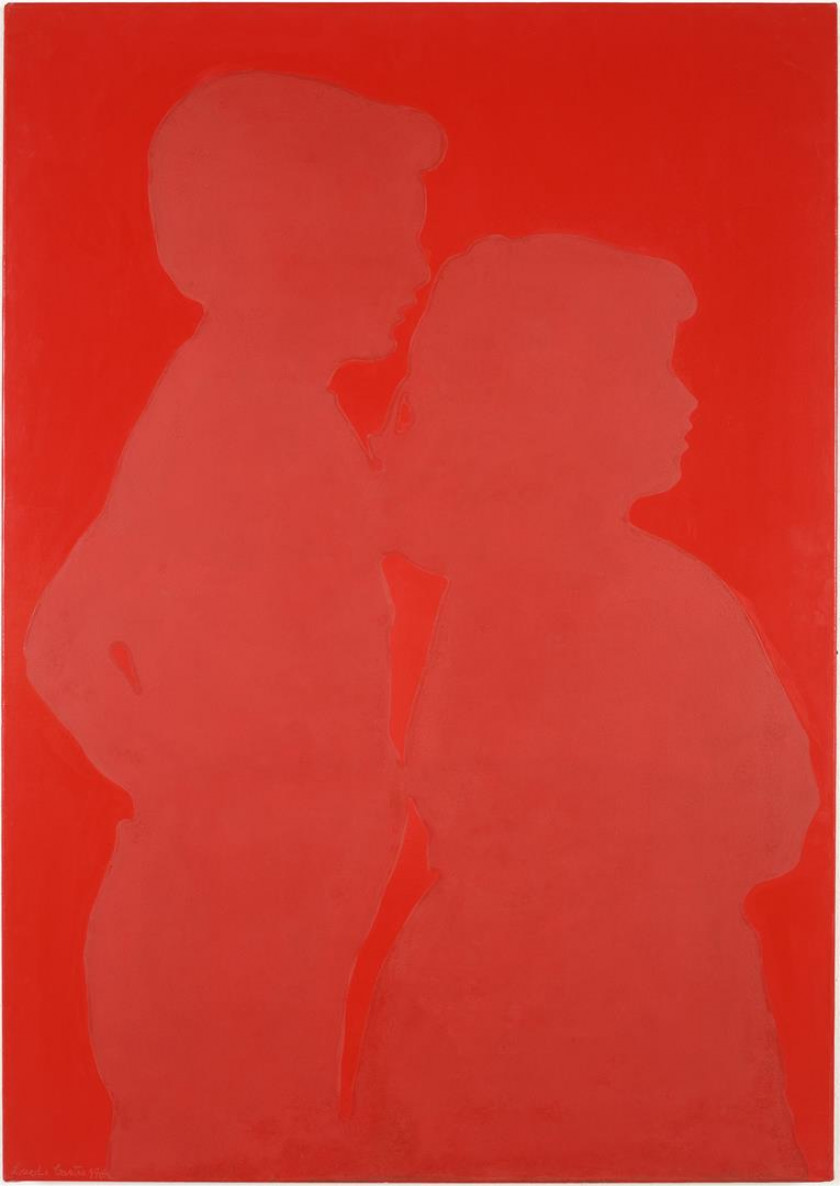Sombra projectada (filhos de Otero e Mercedes) [Projected shadow (sons of Otero and Mercedes)]
painting


1964
Vinyl paint on linoleum
116,5 x 81 cm
After a phase of Objectualist production, the willingness for understanding the forms led Lourdes Castro to develop, from the beginning of the 1960s, an intense and prolonged artistic research around the physical possibilities of representing shadows. For her, shadow is not a sign of obscurity, but a consequent mark of light, occupying for that reason a function of clairvoyance, record, and revelation. Thus, its representation symbolises the possibility of materialising forms of absence and, simultaneously, of dematerialising apparent reality.
In this painting, one can see two silhouettes, projected shadows of two children set onto the canvas, like portraits reduced to their essence. This simplicity is reinforced by the chromatic uniformity, in which the subtle contrast of the red hue reveals only what is necessary. By appropriating reality and taking as a reference the people around her, Lourdes Castro questions the sense of reality and appearances, through a game between presence and absence, between what is seen and what is guessed.
In this period, her research focused on the relationship between the immaterial and the required materiality of the plastic space. The artist wanted then to create a painting "as smooth as possible", without textures, in which the two-dimensional quality of the surface was explored and amplified. As a consequence, in the same year, 1964, Castro started a new line of work, conceiving projected shadows on Plexiglas, a material that bestowing her pieces a unique thickness and visual dimensionality.
Joana Baião